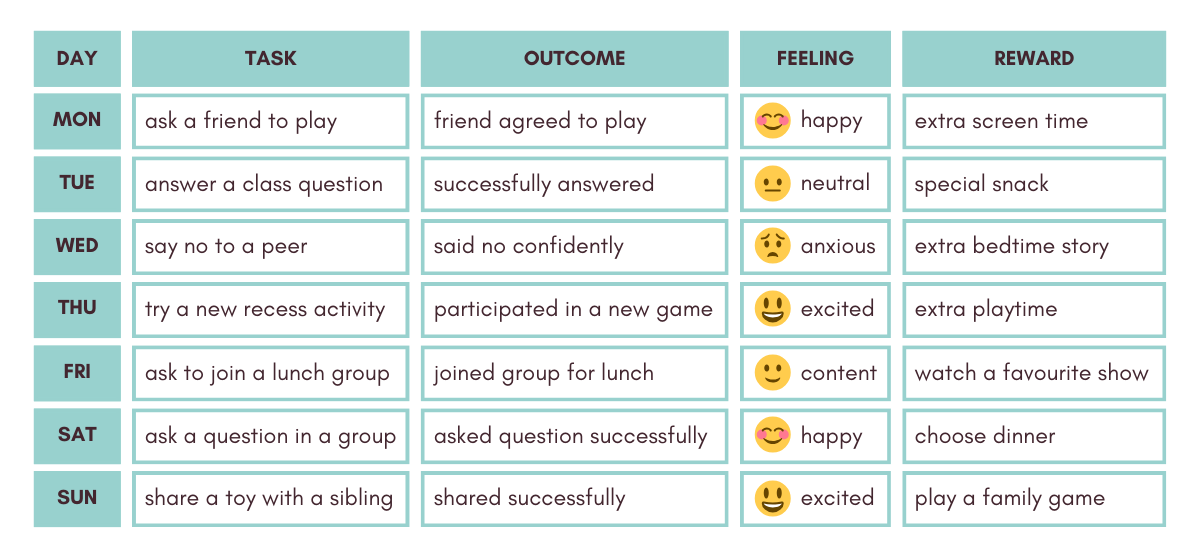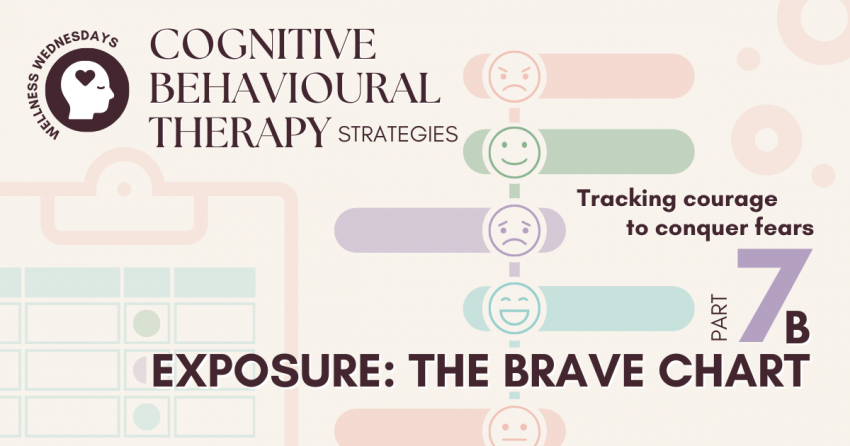In Part 7A, we explored the foundations of Exposure as a CBT strategy and the effective use of the Fear Ladder to help children gradually face their fears and gain confidence. Building on that foundation, we now introduce additional tools to enhance the Exposure process, including the Brave Chart and Behaviour Experiments. These tools not only help track progress but also make the process more engaging and scientifically grounded.
The Brave Chart
This practical and engaging tool assists therapists, parents, and educators in tracking children’s progress with Exposure. The Brave Chart enables them to visually monitor their accomplishments in facing fears by incorporating visual aids to make tracking enjoyable and relatable, while providing a tangible sense of achievement. Additionally, it fosters family involvement and positive reinforcement, making the therapeutic process more supportive. By maintaining motivation, ensuring consistent practice, and offering a structured way to record the child’s emotional responses, the Brave Chart is particularly beneficial for younger children who respond well to visual stimuli and encouragement.
How to Use the Brave Chart
Track Exposure Activities: Utilize the Brave Chart to monitor various Exposure activities and their outcomes. This visual tracking enables children to observe their progress and remain motivated.
Visual Aids: Employ visual aids like emoji stickers to record both the completion of Exposure tasks and the child’s emotions during each activity. Alternatives such as star stickers, hand-drawn faces, or colour dots can also be used to represent different feelings or achievements. Encourage your child to be creative!
Family Involvement and Rewards System: Integrate the Brave Chart into family activities by sharing progress and offering incentives. This participation can make the process more supportive and uplifting.
Example Brave Chart
This tool is especially effective for people with selective mutism, social anxiety, generalized anxiety disorder (GAD), specific phobias, and obsessive-compulsive disorder (OCD).

Behaviour Experiments
Viewing each Exposure to a feared situation as an experiment to test irrational beliefs adds a scientific approach that helps to depersonalize the fear and view it objectively. Here’s how to conduct Behaviour Experiments.
1. Identifying Beliefs: Before an Exposure task, ask the child to identify their belief about what will happen. This helps to articulate specific fears.
2. Making Predictions: Have the child predict what they think will happen as a result of facing the feared situation. This step helps in understanding their expectations and fears.
3. Experimentation: Conduct the Exposure task and observe the outcome. This step provides practical evidence to challenge irrational beliefs.
4. Recording Observations: Document what happens during the experiment. Note any physical sensations, emotions, and the actual outcome compared to the predicted outcome.
5. Reflection: Reflect on the experience to challenge and reframe irrational beliefs. This critical step reinforces learning and builds cognitive resilience.
Behaviour Experiment Examples
Belief: “Something bad will happen if I wash my hands only twice.”
Prediction: “I will feel dirty and get sick.”
Experiment: Wash hands twice instead of three times.
Outcome: “I felt a bit uncomfortable, but I didn’t get sick.”
Reflection: “My belief that I would get sick was incorrect. The discomfort decreased over time.”
Belief: “People will laugh at me if I speak up in class.”
Prediction: “I will be embarrassed and everyone will make fun of me.”
Experiment: Raise hand and answer a question in class.
Outcome: “I answered the question, and no one laughed.”
Reflection: “My belief was incorrect. Speaking up wasn’t as scary as I thought, and no one made fun of me.”
By incorporating these tools and techniques, children can systematically face their fears, challenge irrational beliefs, and build the confidence needed to handle anxiety-provoking situations effectively. This structured approach not only helps in managing anxiety but also promotes overall mental well-being.
In the next part of our CBT series, we’ll explore mindfulness techniques to help bring your child to the present moment. Discover simple practices like the 3-3-3 method, mindful breathing, and making calming mindfulness jars. We’ll also cover mindful movement activities and even mindful eating to help your child develop a sense of calm and focus.


